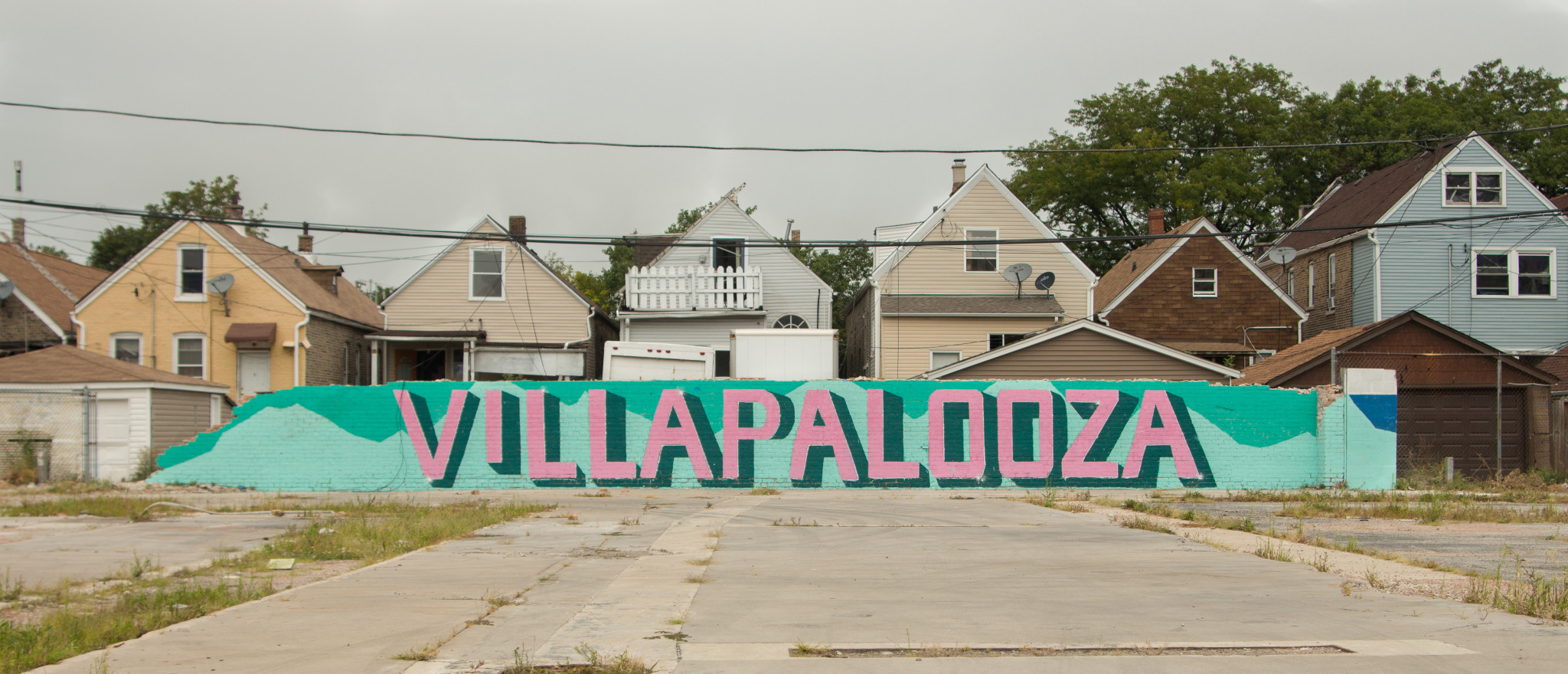Little Village, bordering Pilsen, North Lawndale, and Cicero, is a neighborhood that comes with many a mythology, from the first port of call for many immigrants from Mexico and Central America to the oft-mentioned economic powerhouse that is 26th Street, with its blocks and blocks of quinceañera dress stores and botanicos. We interviewed some Chicagoans who call Little Village home about what makes the neighborhood tick.
I’ve lived there since 1969, forty-seven years, and it’s been my community of choice over that length of time, most of my life. It’s a hard-working class community, it’s got a lot of grit, people go to and from work twenty-four hours a day. In 1995, during the terrible heat wave, no one died in Little Village, which means that we have a strong social network where people look out for each other. There’s a lot of interaction on the street continuously. I’m proud of the community’s history fighting for its schools. We had a really bad overcrowding problem during the eighties and nineties that was addressed with the construction of five new schools in Little Village. The fight for the high school that culminated in a hunger strike is a test of the community’s resolve to improve educational outcomes. The neighborhood continues to be the microcosm of Chicago’s Latino immigrant community. The neighborhood certainly has many challenges, but knowing there are hard-working people with lots of integrity has made my time there well worth the experience.
–Chuy Garcia, Cook County commissioner
When I was four, we moved to 23rd and Marshall Boulevard in Little Village. What I remember was that the boulevards were kind of a dust bowl. When you drive down now they are very beautiful, but at that point the city wasn’t doing much to maintain those green spaces. My parents were organizers, they started a block club, and little by little people began to take better care of the green space…My parents are still there on the boulevard. That’s always going to be home.
–Amanda Cortes, cultural worker
I remember spending a lot of time playing with my cousins in the street, having a block party on our block every summer. At that time there was this different generation of young people that weren’t listening to the same music as others. We kind of started to become, I guess, more of the alternative kids…Now I work in Little Village, and I think it’s changed in a few ways. My friends used to just skate in the plaza wherever they could, but now there’s skater parks. Young people are feeling it’s okay to grow up the way you want to grow up.
–Vanessa Sanchez, director of Yollocalli
I spent thirty-five years on Avers, and I still live in the neighborhood. I describe Little Village as sort of a throwback neighborhood, where you can walk to your corner store and buy a gallon of milk and the neighbors know each other. You’ve got a big commercial strip—you can get pretty much anything on 26th Street. There are some issues that weigh on people, like gang violence. There is a real strong sense of pride. I know people from the North Side who say, “You guys in Little Village are really all about your hood,” and I say, “Yeah, we kind of are.” I understand some people from my generation being like, “I want to raise my kid somewhere safer.” But we grew up here, and we turned out okay.
–Jaime DeLeon, comedian
Best Last-Minute Prayer
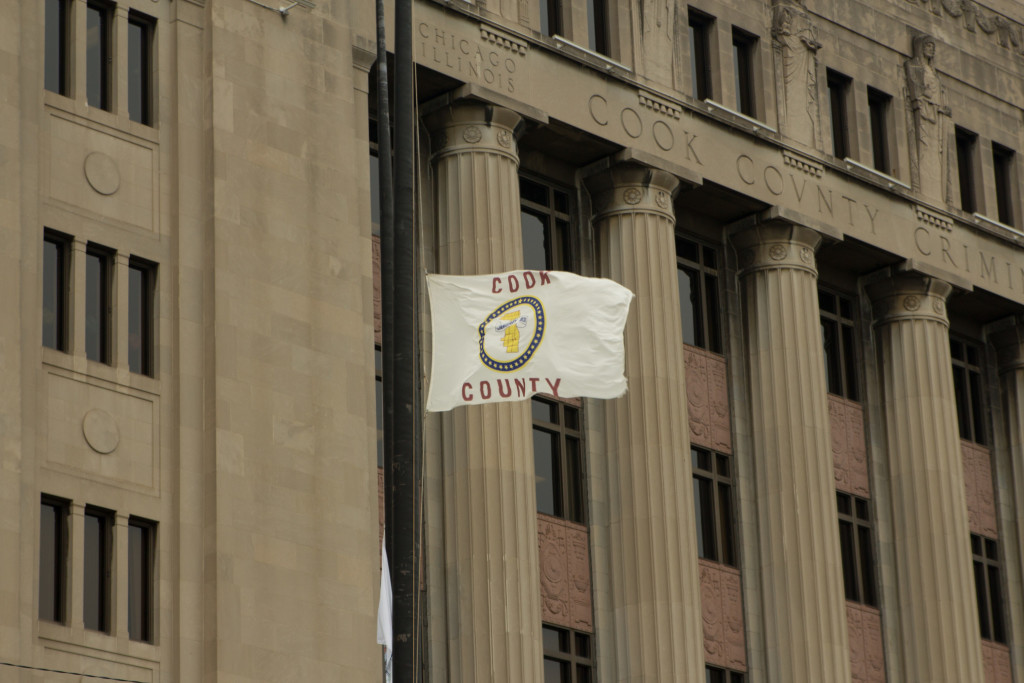
Just before you walk up the stairs to the revolving door that brings you into the main foyer of Cook County Court, look to your left and you’ll notice a table. It’s a simple set-up—two people standing behind the table, draped with blue cloth and several photo-copied booklets being handed out—but its plans are grand. You’re looking at the Courtside Ministries, a group maade up of members from churches all over the state who volunteer to pray with people before they go in for their court date. You can find them on select days in front of courthouses in Illinois and as far out as Indiana. As the reaches of the Criminal System leave people “facing financial, relational, and spiritual ruin,” Courtside hopes to do its part to battle the ills, first of all by putting in a good word.
Courtside Ministries, 2650 S. Calfiornia Avenue, Wednesday–Friday at Cook County Jail, 8:30am–noon. courtsideministries.org (Yana Kunichoff)
Best Activist Schoolhouse
Maria Saucedo Scholastic Academy
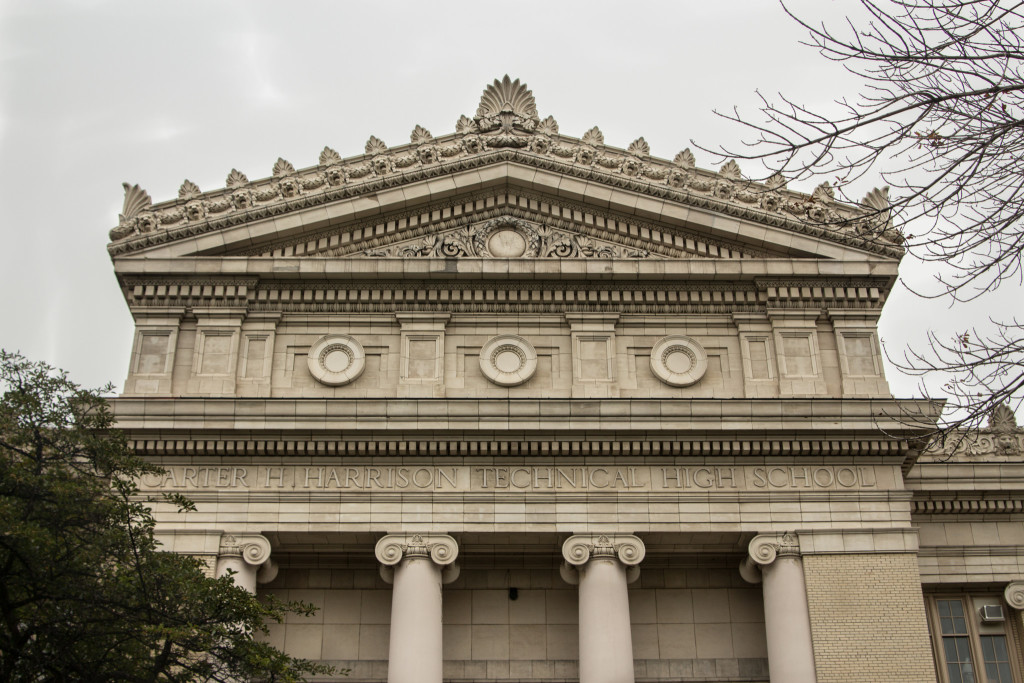
The white columns and delicate filigree decorations of Maria Saucedo Scholastic Academy, on Little Village’s eastern edge, stretch across an entire city block in the dense immigrant neighborhood. It’s an imposing sight, even more so when the elementary school’s more than 1300 students spill out of its doors to cover Marshall Boulevard’s expanse of lawn with their pounding feet and dragging school bags.
From the outside, it’s a typical, if uncharacteristically beautiful, schoolhouse. But what you won’t be able to tell from the building’s exterior is the school’s recent history spearheading the movement against standardized testing on the Southwest Side.
The furor began in the spring of 2014, when Chicago Public Schools announced that as part of its move towards the Common Core educational standards mandated by the Department of Education, CPS would be phasing out a test called the Illinois Standard Achievement Test (ISAT). Though the test would soon be obsolete, and none of the scores would be used in evaluations that year, CPS wanted students to take the test.
What CPS came up against was a wave of city-wide opposition, with its home in a few key groups and schools. The call for a boycott of the test was led by More Than a Score, a community organizing group that encouraged parents to opt their children out of taking the test. And with an opposition to over-testing a long-standing position of the Chicago Teachers Union, teachers at a few schools jumped in as well.
On the North Side, teachers at Drummond Thomas Montessori School announced in February 2014 that they would be boycotting the test.
And on the South Side, teachers at Saucedo voted unanimously only days later that they wouldn’t give their students the ISAT. That same day they held a press conference on the steps of the school.
Sarah Chambers, a special education teacher at Saucedo, was one of the more vocal voices in the boycott. “Over the years the amount of testing has increased tenfold. The average elementary school student takes eighteen or nineteen tests a year,” said Chambers, who was one of the original members of the Caucus of Rank and File Educators in the CTU, the caucus that now leads the union.
Working in a majority Latino, low-income school, Chambers noted, meant that her students were particularly susceptible to the ills caused by testing. Lower school scores could mean fewer resources at a school already ailing from its low tax base.
“Tests are being used to rank and sort our schools and teachers,” Chambers said. Not to mention that they up valuable teaching time, she noted.
This past spring, CPS announced they would only be testing a small proportion of students on the PARCC, another test being phased out because of changing national education standards. Chambers sees it as a win—“we’ve started seeing movement.”
She also notes that the Little Village neighborhood isn’t a stranger to social justice movements around education—a group of parents held a nineteen-day hunger strike in 2001 to push for the opening of a high school to relieve their children from overcrowding in the neighborhood schools. The result, the Little Village Social Justice High School, sits on the other side of the neighborhood.
“Little Village is a very strong Latino neighborhood,” said Chambers, “and a lot of parents really speak up for the needs of the black and brown children in the community.”
Maria Saucedo Scholastic Academy, 2850 W. 24th Blvd. Monday–Friday, 8am–4pm, September–June. saucedo.cps.k12.il.us (Yana Kunichoff)
Best Storefront Taqueria in Little Village
La Chaparrita
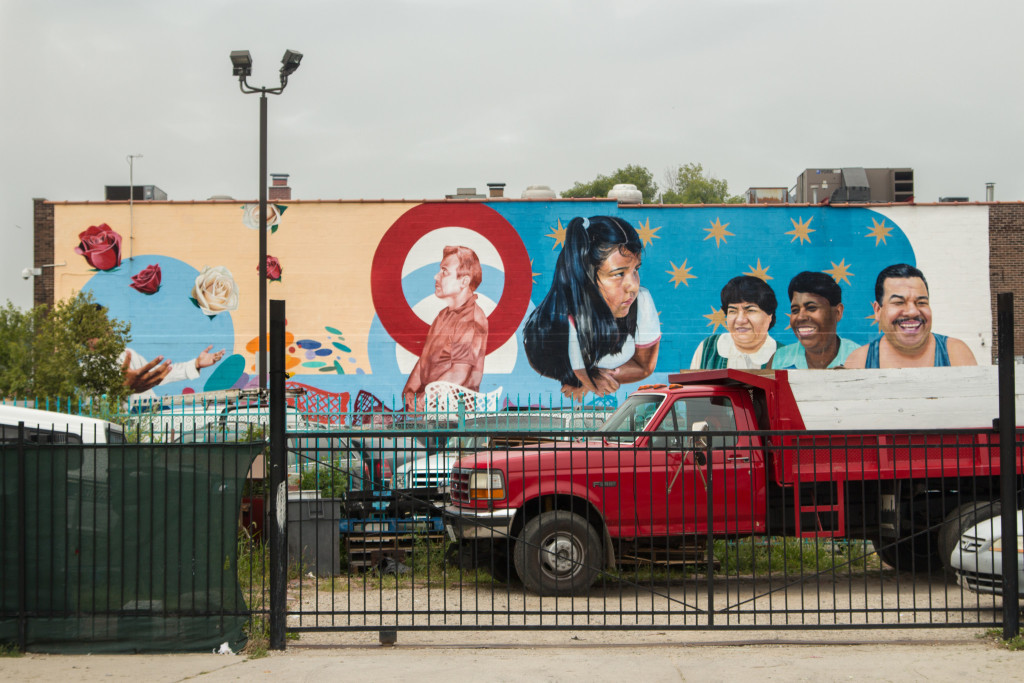
What can be said about La Chaparrita that hasn’t already been said by Serious Eats, the Reader or even Chicago Magazine? Quite a lot, actually. La Chaparrita is simply one of the best taco places in Chicago.
Many people like the crispy tripe taco, but even better is their taco tripa suave—soft and chewy, with more prominent beefy, tripe-y flavor. If you haven’t had La Chaparrita’s tripe tacos, you really have to make a trip.
La Chaparrita makes their own longaniza, a crumbly, spicy sausage similar to chorizo, which fills what is probably my second favorite taco. Their cecina is exactly what you want: beefy, salty and chewy, but still tender. They also have pot-roast tacos that glisten with fat. I recently saw sweet meats at the now-shuttered Nightwood for $15—La Chaparrita has them in taco form for $2.50.
And if you’re (somehow) tired of tacos, they also have tamales and huaraches, hongos and flor de calabasa. At La Chaparrita, the delights never end.
La Chaparrita Taqueria. 2500 S. Whipple Street. Open daily, 11am–10pm. (773) 247-1402. (Glenn Allen)
Best Reason to Close a Street
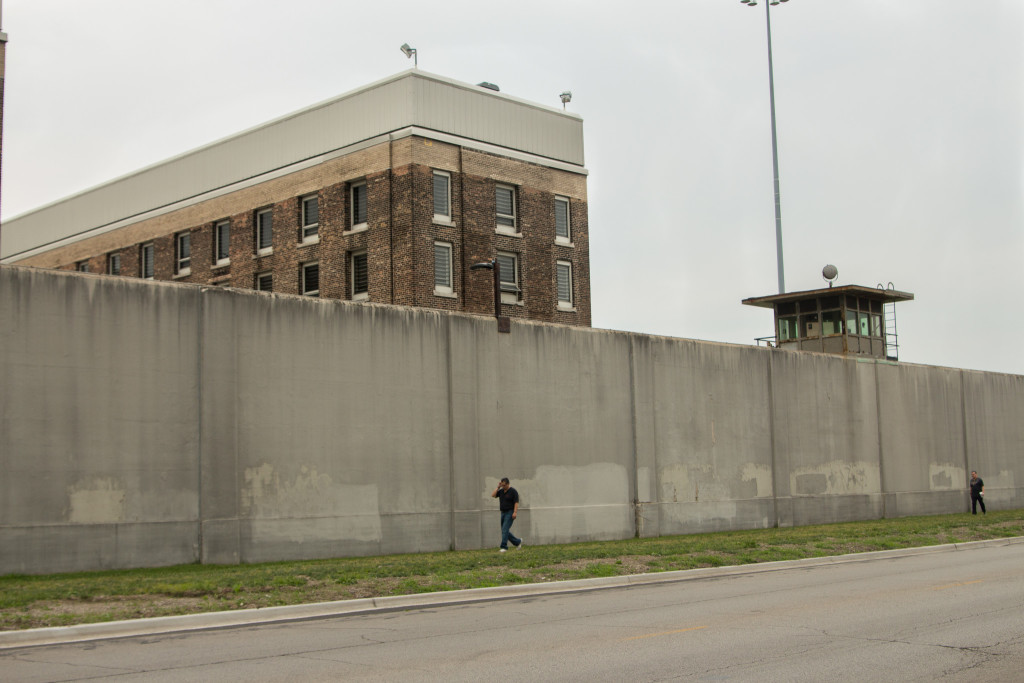
August 15 was Chicago-hot, but at the western border of Cook County Jail, the fifty cars parked on Sacramento had their windows down. The same Vocalo broadcast flowed from every radio, fading in and out as you walked past: a two-hour set that cut B.B. King’s 1970 jailhouse performance with modern interviews. The cars—most of them black, some brown, a handful white—mirrored the jail’s demographic makeup. “PARK” was an art installation from 96 Acres, a series of artistic interventions around the jail that SAIC professor Maria Gaspar started in 2012; the “PARK” intervention was conceived by artist Landon Brown. Fall will bring a Hull House exhibit, zines, and educational programming, and an animated short projected on the walls of the jail building. “It’s a jail that houses 100,000 people in a year, and somehow it’s normalized,” says Gaspar. “How do we disrupt the master narrative?”
Cook County Jail, 2700 S. California Ave. Maria Gaspar, ometsol@gmail.com. 96acres.org (Hannah Nyhart)
Best Paleta to Eat Under the Arch
La MichoaKana Golden
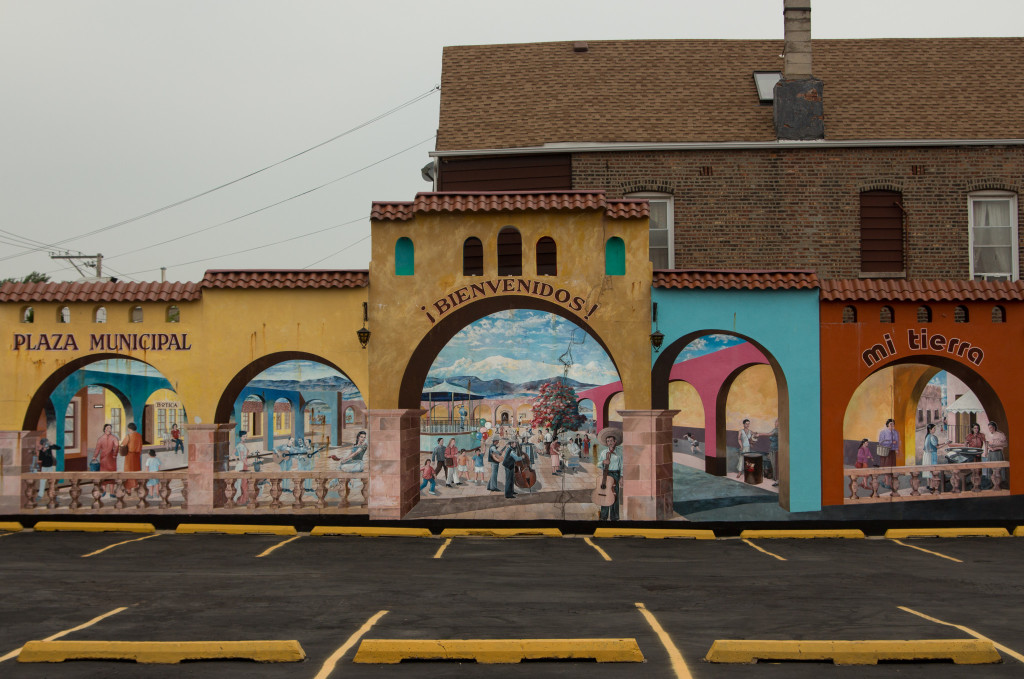
Heading west on 26th Street under the arch, it’s easy to get distracted by the razzle-dazzle lights beaming off the furniture stores and podiatrist signs. If you’re not looking, you’ll miss La MichoaKana Golden, which sits just one block west of the neighborhood’s quintessential public symbol. You may think you’ve been to La MichoaKana, but chances are you’ve actually been to La Michoacana, one of the more than eight thousand chain stores that span across the border and are loosely overseen by one family. La MichoaKana is the only one of its kind, but you’ll find all the paleteria staples here: paletas of strawberries and cream, mango with chili, and, my personal favorite, an electric blue bubblegum flavor. Work up an appetite by looking at the eclectic combinations of food (Oreo with a cherry on top, anyone?) rendered in giant stickers all along the walls.
La MichoaKana Golden, 3125 W. 26th Street. Open daily, 10am–9pm. (773) 823-9037 (Yana Kunichoff)



